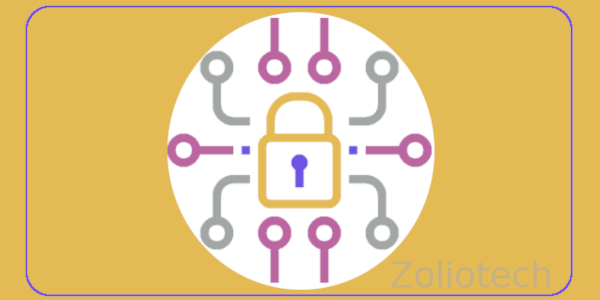
This article provides an overview of the IT security practices we follow at Zoliotech
Procedures and processes to ensure IT security during development are established early in the project and followed. This includes identifying risks and vulnerabilities, developing security policies, implementing security controls, monitoring and testing the system, and responding to security incidents. Additionally, at organizational level, we conduct regular security training and awareness for employees, develop secure coding practices, and apply best practices for software development. This includes utilization of hardware equipment (laptops, servers) during the development process. We are in the process of introducing automated security tools to detect and prevent security threats.
1. Understanding IT Security Basics
In order to ensure the security of the software, developers must understand the basics of IT security protocols and procedures. First and foremost, developers should be aware of the different types of security threats that their software may be vulnerable to. Common threats include malware, viruses, and unauthorized access. It is important to be aware of the potential risks that these threats pose to the software.
Once developers understand the types of security threats, they must then create and implement procedures that are designed to protect the software from these threats. These procedures may include authentication and authorization processes, encryption of sensitive data, strict access control, and regular security scans.
Developers should also consider using secure coding practices. These practices involve writing code that is designed to be secure from the start, such as using secure coding libraries and frameworks, and avoiding vulnerable coding practices such as using weak passwords. Finally, developers should be aware of the regulations and compliance requirements that may apply to their software when deployed at the customer site.
2. Developing Security Protocols for Software Development
Having a clear set of procedures and processes in place for IT security is important during software development. Identify and classify the different types of threats that could potentially affect our organization (Zoliotech) as well as our client’s organization. This includes anything from malicious code to malicious actors, network vulnerabilities, and more. At Zoliotech, we go through this exercise periodically for all the projects. Once these threats have been identified it is easy to develop specific policies and procedures to protect against them.
We establish policies that require developers to follow robust coding standards outlined by the OWASP Top 10, to ensure that the code is secure. Additionally, we also create processes for securely sharing and storing code. Our developers use version control system for code storage. Each project has its own code repository and only authorized personnel have access to the codebase.
The next step is to establish a secure development lifecycle (SDLC). Zoliotech follows Agile development methodology in most of the projects. This is an iterative process that involves the identification, assessment, and remediation of security risks throughout the software development process. By having a documented SDLC in place, we ensure that all security risks are properly addressed and are being reviewed in timely manner
3. Communicating Security Requirements to Developers
One of the first steps in ensuring IT security during software development is to communicate these requirements to developers clearly. This involves a comprehensive overview of the security goals and objectives, as well as any specific requirements that developers must adhere to. It is important that developers understand the security objectives and that they are able to communicate the requirements to other people involved in the development process. These includes:
- How to test, verify, and validate the code they write
- Guidelines on how to use secure coding practices
- Specific points on input validation, encryption, and authentication
- Specially designed test cases to expose vulnerabilities
- Introduction and training on tools and resources for the above
A communication culture to think through the vulnerabilities of the system is encouraged within the organization. This paves the strong foundation in developers for ensuring security.
4. Implementing Security Testing Strategies
Security testing is an essential part of the software development process. It helps to ensure that the software operates in a secure and reliable manner, and is free of malicious code, vulnerabilities, and privacy violations. Security testing strategies are implemented throughout the software development life cycle, from the initial design and development phases through to deployment and post-implementation.
The first step in implementing a security testing strategy is to define the security requirements of the system. This includes defining the security goals of the system, identifying the security threats and risks, and creating a security policy. Once the security requirements have been defined, the next step is to implement a strategy for security testing. This includes developing a test plan, selecting appropriate security testing tools and techniques, and executing the tests. The security testing plan includes penetration tests, static code analysis, and dynamic code analysis. Penetration tests are designed to identify vulnerabilities that may be exploited by malicious attackers. Static code analysis is used to identify security flaws in the code, while dynamic code analysis is used to detect and analyze potential security issues in the running application.
5. Monitoring and Maintaining IT Security
Monitoring and maintaining IT security is key to keeping the software safe. All computers used for development have system logs activated. Automated scripts are deployed to monitor these logs periodically and alert the user if anything abnormal. Repeated attempts to access the computer from outside is one such activity that will be monitored.
On the same note, when our developers write code for our customers, they ensure to capture logs for every event on the system. This is part of their secure coding practices. Preventive coding against any possible vulnerabilities is also part of our coding guidelines. These aspects come into light during code reviews and test case reviews during the development. Senior staff members and architects help review these code and documents with special focus on IT security matters.
6. Best Practices for Protecting Software Data
-
- Implement security measures such as firewalls and encryption to protect data from unauthorized access.
- Establish and enforce policies that limit access to software data to only those who need it.
- Ensure all software is updated regularly with the latest security patches.
- Password protect access to software and regularly change passwords.
- Use secure email services to protect the transmission of data.
- Create backups of software data and store them in a secure offsite location.
- Monitor and audit access to software data on a regular basis.
- Educate users on best practices for protecting software data.
- Implement two–factor authentication for access to software.
- Disable all unnecessary services and ports on software systems.
7. Evaluating Security Requirements for Third-Party Components
Software development projects involve integrating third–party components into the product. As a result, evaluating the security requirements of these components is an essential part of ensuring the overall security of the product.
When evaluating third–party components, it is important to consider both the security requirements of the components themselves, as well as any potential security implications they may have on the overall product. This includes considering the security requirements of the code, how it is integrated into the product, and any potential vulnerabilities that may arise from using the component.
8. Leveraging Automation to Streamline Security Processes
Automation makes it easier to track and monitor security protocols. Automated systems can provide real–time insights into security processes, allowing the team to detect and respond to potential security threats quickly. Automation can also help create customized security protocols for different projects, making it easier to ensure that each project is secure.
Finally, automation can help organizations reduce the risk of human error. Some of the areas where Zoliotech has implemented automation are:
- Build automation from the version control system
- Vulnerability test scripts
- Computer/Server logs monitoring for abnormal activities
- Database activities logging and monitoring
- Some of the test case execution and result analysis
9. Conclusion
It is essential for organizations to take the necessary steps to ensure IT security is maintained throughout the software development process. By implementing proper security protocols and procedures, organizations can reduce the risk of potential cyberattack and protect their data as well as client’s data. With the ever–changing landscape of cyber threats, organizations must remain vigilant and update their security protocols as needed.


